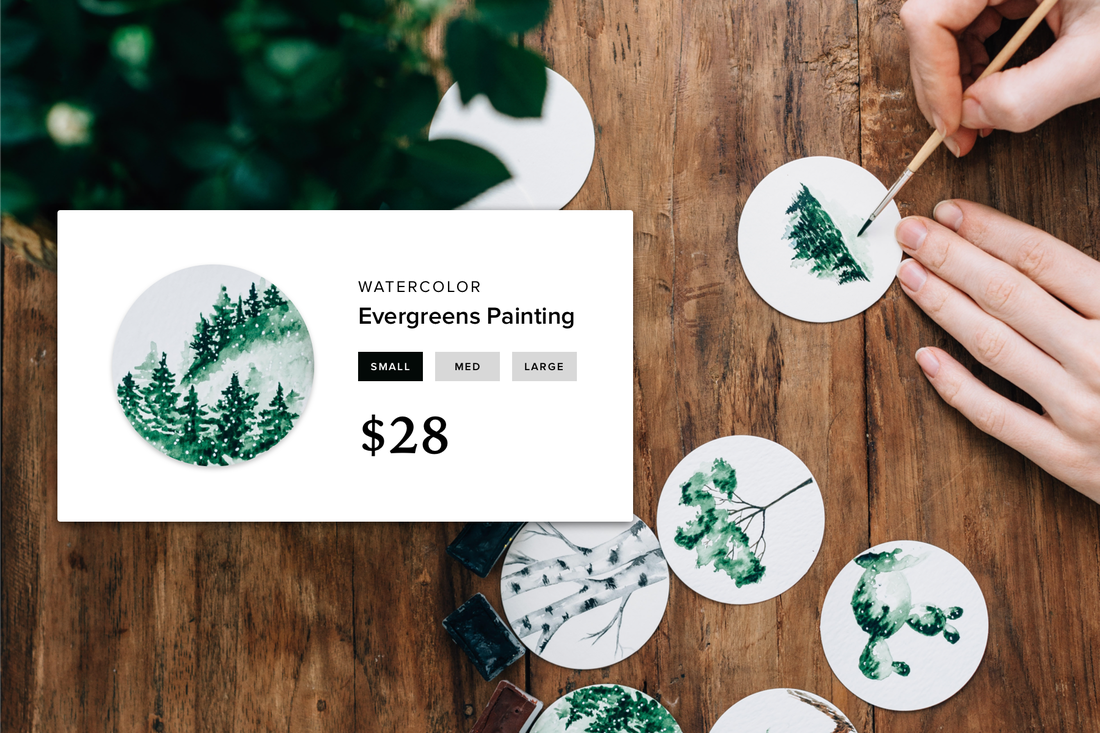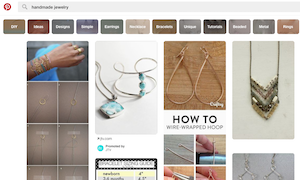So you've enjoyed success selling your handmade goods on Etsy or Amazon, and now you're ready to take the next step by building your business's online presence with your own, standalone craft website. Figuring out how to create your online craft business can seem overwhelming, but it doesn't have to be. There are plenty of free, easy-to-use tools available to help you, and you don't have to know how to code or create your own design.
Here are 7 tips to consider when launching your craft website:
1. Get your own domain name
Purchasing your branded domain name is an inexpensive and hassle-free way to give your business that professional polish it needs. Check out Weebly's tips for registering and choosing a great domain name here.
2. Use your creativity to craft your shop
Brand your new website to show your personality. Consider adding a blog to the site, make an "about" page to explain your business and perhaps tell its story, and provide contact and customer support information. Make sure to include appealing product descriptions and use high-quality photos. If you want to present a down-home personality, use your writing skills to do so.
"I'm constantly working on the design for my site. I think you have to try different templates and styles until you find something that matches your brand," says Lisa Dockery, who sells her own stationery line on The Nested Turtle. She has tried numerous templates from Weebly's theme gallery. "I continue to make tweaks and changes to the design as I become more comfortable with the site and develop my brand."
It's important to have great product images, she says. "When people can't physically see and touch your items they need to be able to see what they are purchasing," says Dockery. "Good lighting is everything."
3. Decide where customers will be able to buy your products
While businesses such as Oodle Ba Doodle, which sells "huggable" pillows handmade from reclaimed items, has its own website but also sells on Etsy and in bricks-and-mortar boutiques, The Nested Turtle's Dockery has closed online shops she had elsewhere, including Amazon and ArtFire.
"Etsy gave me my start and it's also a great place for people to find me. I've had small boutiques contact me about wholesale through Etsy, and was recently contacted by a small stationery consulting company that wants to represent my line, selling to retailers locally and nationally," said Dockery. " As I start to grow my wholesale business I will begin focusing more on my website than Etsy."
It's easy to make the most out of all options available by routing your Etsy shop business to your own website. Steve Chou suggested on CreateHYPE that, while transitioning from Etsy, you price your own independent website's items slightly lower, then include a business card or coupon in shipments to your Etsy customers, suggesting that they start shopping directly at your eCommerce site.
4. Offer a newsletter with special deals for loyal customers
The Nested Turtle, for example, encourages customers to sign up for its newsletters so they'll be the first to hear about sales, giveaways and news products.
5. Use social media to drive interest and bring customers to your website.
Whether it's Pinterest, Twitter, Instagram, or Facebook , let your fans, followers and folks with similar interests know that the new site is there. You might consider offering a special, like 5 percent off for the first 10 customers.
6. Make your policies clear.
As Brittany Klontz wrote on Bplans, let customers know how long shipments will take, whether they can return items, and how much they might have to pay in return costs.
7. Learn, and stick with it.
"Don't get discouraged if you don't have immediate success. It takes time and consistency to build up a customer base. Getting found online is a challenge, so make sure you get familiar with search engine optimization (SEO)," says The Nested Turtle's Dockery. The stationery designer also recommends you don't compare yourself to others, especially those who've been online for years.
"Do your research online and talk to people. There are a lot of great tutorials online to help get you started, many of which are free. Study people that you admire in your area and even reach out to them for advice," she says. "I've made some great friends along the way that I've never even met in person, just by reaching out to them in admiration of their work."
Dockery encourages people not to get overwhelmed when they're getting started or to think about everything they have to do all at once. "Write it all down, make lots of lists and just start. If you don't just start on something you'll never get anywhere."
Interested in learning more about creating a website for your handmade business? Start here.
1. Get your own domain name
Purchasing your branded domain name is an inexpensive and hassle-free way to give your business that professional polish it needs. Check out Weebly's tips for registering and choosing a great domain name here.
2. Use your creativity to craft your shop
Brand your new website to show your personality. Consider adding a blog to the site, make an "about" page to explain your business and perhaps tell its story, and provide contact and customer support information. Make sure to include appealing product descriptions and use high-quality photos. If you want to present a down-home personality, use your writing skills to do so.
"I'm constantly working on the design for my site. I think you have to try different templates and styles until you find something that matches your brand," says Lisa Dockery, who sells her own stationery line on The Nested Turtle. She has tried numerous templates from Weebly's theme gallery. "I continue to make tweaks and changes to the design as I become more comfortable with the site and develop my brand."
It's important to have great product images, she says. "When people can't physically see and touch your items they need to be able to see what they are purchasing," says Dockery. "Good lighting is everything."
3. Decide where customers will be able to buy your products
While businesses such as Oodle Ba Doodle, which sells "huggable" pillows handmade from reclaimed items, has its own website but also sells on Etsy and in bricks-and-mortar boutiques, The Nested Turtle's Dockery has closed online shops she had elsewhere, including Amazon and ArtFire.
"Etsy gave me my start and it's also a great place for people to find me. I've had small boutiques contact me about wholesale through Etsy, and was recently contacted by a small stationery consulting company that wants to represent my line, selling to retailers locally and nationally," said Dockery. " As I start to grow my wholesale business I will begin focusing more on my website than Etsy."
It's easy to make the most out of all options available by routing your Etsy shop business to your own website. Steve Chou suggested on CreateHYPE that, while transitioning from Etsy, you price your own independent website's items slightly lower, then include a business card or coupon in shipments to your Etsy customers, suggesting that they start shopping directly at your eCommerce site.
4. Offer a newsletter with special deals for loyal customers
The Nested Turtle, for example, encourages customers to sign up for its newsletters so they'll be the first to hear about sales, giveaways and news products.
5. Use social media to drive interest and bring customers to your website.
Whether it's Pinterest, Twitter, Instagram, or Facebook , let your fans, followers and folks with similar interests know that the new site is there. You might consider offering a special, like 5 percent off for the first 10 customers.
6. Make your policies clear.
As Brittany Klontz wrote on Bplans, let customers know how long shipments will take, whether they can return items, and how much they might have to pay in return costs.
7. Learn, and stick with it.
"Don't get discouraged if you don't have immediate success. It takes time and consistency to build up a customer base. Getting found online is a challenge, so make sure you get familiar with search engine optimization (SEO)," says The Nested Turtle's Dockery. The stationery designer also recommends you don't compare yourself to others, especially those who've been online for years.
"Do your research online and talk to people. There are a lot of great tutorials online to help get you started, many of which are free. Study people that you admire in your area and even reach out to them for advice," she says. "I've made some great friends along the way that I've never even met in person, just by reaching out to them in admiration of their work."
Dockery encourages people not to get overwhelmed when they're getting started or to think about everything they have to do all at once. "Write it all down, make lots of lists and just start. If you don't just start on something you'll never get anywhere."
Interested in learning more about creating a website for your handmade business? Start here.
 Dinah W. Brin A freelance reporter and writer based in Philadelphia, Pa., Dinah previously worked as a staff reporter for The Associated Press and Dow Jones Newswires, among other publications.
Dinah W. Brin A freelance reporter and writer based in Philadelphia, Pa., Dinah previously worked as a staff reporter for The Associated Press and Dow Jones Newswires, among other publications.





